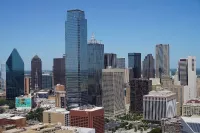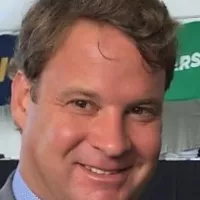The NBA playoffs are the annual elimination tournament that determines the NBA champion. It follows the regular season and the play-in tournament. The top six teams from each conference automatically qualify for the playoffs based on their regular-season record. Teams finishing seventh through tenth in each conference participate in a play-in tournament to secure the final two playoff spots. The playoffs consist of four rounds, with each series being a best-of-seven format.
1946: Start of All-Time NBA Playoffs Table
The all-time NBA playoffs table includes match results from every team that has played in the playoffs since the 1946–47 season.
1947: Philadelphia Warriors Win 1947 BAA Championship
In 1947, the Philadelphia Warriors won the runners-up bracket and beat the Western champion Chicago Stags four games to one to win the BAA Championship, which the NBA recognizes as its first championship.
1947: Philadelphia Warriors Reach Final with Fewer Games Played
In 1947, the Philadelphia Warriors, winners of the runners-up bracket, reached the final series having played fewer tournament games than their final opponents, the Chicago Stags.
1948: Baltimore Reached Final with Fewer Games Played
In 1948 Baltimore reached the final series having played fewer tournament games than their final opponents, Philadelphia.
1948: Baltimore Wins 1948 BAA Championship
In 1948, Baltimore won the runners-up bracket and beat Eastern champion Philadelphia in the final to win the BAA championship.
1949: Establishment of the NBA
In 1949, the National Basketball Association (NBA) was established through the merger of the Basketball Association of America (BAA) and the National Basketball League (NBL).
1949: BAA Tournament Format Change
In 1949, the third and last BAA tournament matched Eastern teams exclusively and Western teams exclusively, necessarily generating Eastern and Western playoff champions to meet in the final. The number of playoff teams was increased from three to four from each Division; two rounds of best-of-three series were played, followed by a best-of-seven championship.
1950: Minneapolis Lakers Win First NBA Championship
In 1950, the Central champion Minneapolis Lakers became the first league champion under the NBA name by defeating Anderson from the West in a best-of-three, with Syracuse from the East idle, and then knocking off the Syracuse Nationals in six games.
1951: Division Finals Change to Best-of-Five
In 1951, the NBA playoffs changed the division finals into a best-of-five playoff.
1953: Division Finals Change to Best-of-Five
Through the 1953 playoffs the division finals were a best-of-five playoff.
1954: Round Robin Playoff Format
In 1954, uniquely in NBA history, a three-team round robin was played among the three playoff teams in each division.
1955: Bye Implemented for Division Leaders
From 1955 to 1966, the first-place team in each division was idle while its two runners-up played a best-of-three series.
1955: Byes for Higher-Seeded Playoff Teams
There were byes, or idle time, for the higher-seeded playoff teams 1955–66 and 1975–83.
1958: Division Finals Expanded to Best-of-Seven
In 1958, division finals were expanded to best-of-seven series.
1961: Division Semifinals Expand to Best-of-Five
In 1961, division semifinals were expanded to best-of-five series.
1961: Initial Byes and Best-of-Five Series Introduced
The 1961 NBA tournament combined initial byes for the top seeded teams in each division with best-of-five initial series for second and third seeded teams in both divisions.
1966: Increased Rest for First-Round Participants
By the 1966 NBA tournament, the schedule provided more rest for the first-round participants with byes of 11 and eight extra days idle.
1966: NBA Postseason Tournament Changes
From 1955 to 1966, with eight to nine league members, the first-place team in each division was idle while its two runners-up played a best-of-three. However, in 1966, the period of eight to nine league members ended.
1966: Return to Eight-Team Tournament
In the 1966–67 season, with ten league members, eight teams were again admitted to the tournament, providing a simple three-round knockout (8-team bracket).
1968: Best-of-7 Series Era Begins
In 1968 the NBA implemented best-of-7 series.
1970: Best-of-7 Series Era Continues
In 1970 the NBA continued with best-of-7 series.
1975: Addition of Fifth Team to Each Division
In 1975, a fifth team was added to each Division, necessitating an additional first round of best-of-three series.
1975: Byes for Higher-Seeded Playoff Teams
There were byes, or idle time, for the higher-seeded playoff teams 1955–66 and 1975–83.
1977: Addition of Sixth Team to Each Division
In 1977, a sixth team was added to each Division, necessitating an additional first round of best-of-three series.
1983: Last Tournament with First-Round Byes
The 1983 NBA tournament is the latest to incorporate first-round byes for seeded teams.
1984: Expansion to 16-Team Tournament
In 1984, the tournament expanded to its present 16-team, four-round knockout format, and the first-round series was expanded to a best-of-five.
2003: First Round Changed to Best-of-Seven
In 2003, the NBA playoffs changed the first round to a best-of-seven series.
2004: NBA Division Realignment and Seeding Rules
Beginning with the 2004 season, with the addition of the Charlotte Bobcats, the NBA realigned its divisions and guaranteed each division winner a top-three playoff seed.
2004: Seeding Rules Prior to Division Realignment
Prior to 2004, when the NBA had two conferences with two divisions each, division champions were guaranteed the top two seeds, ensuring the top two teams in a conference could not meet until the Conference Finals.
2005: Seeding Rule Modified
After the 2005–06 season division winners would still receive automatic playoff berths but they are guaranteed a top-four seed
2005: Potential Conference Semifinals Matchup of Top Two Teams
After the NBA realigned its two conferences into three divisions each, the seeding rules meant that if the top two teams by record were in the same division, they could face each other in the conference semifinals. The 2005-06 NBA season saw the San Antonio Spurs and Dallas Mavericks in that very position.
2005: Playoff Roster Rules and Limitations
As of 2005, NBA playoff teams must identify their postseason rosters before the playoffs begin, with limitations on the number of players and eligibility based on regular-season participation.
2005: Controversy in Playoff Format
The playoff format in place for the 2005 and 2006 NBA playoffs created controversy.
August 2006: NBA Playoff Seeding Rules Change Announcement
In August 2006, the NBA announced that beginning in the 2006–07 season, the top four seeds in each conference would be seeded according to their win–loss totals, guaranteeing that the top two teams cannot meet until the conference finals.
2006: Controversy in Playoff Format
The playoff format in place for the 2005 and 2006 NBA playoffs created controversy and would be changed prior to the 2006–07 NBA season.
October 23, 2013: NBA Finals Format Change
On October 23, 2013, NBA team owners unanimously voted to change the format of the NBA Finals from the 2–3–2 format.
2014: Implementation of 2-2-1-1-1 Playoff Series Format
In 2014, the NBA implemented the 2–2–1–1–1 format for all playoff series, granting home-court advantage to the higher-seeded team in Games 1, 2, 5, and 7.
2016: Tiebreaker Rule Adjustment
Prior to 2016, the rule that division leaders are given higher seeds regardless of any other criteria was also used for two-team ties if the two teams had the same head-to-head record.
2020: Introduction of Play-In Format
In 2020, the NBA implemented a play-in format in the Western Conference, where the No. 9 Memphis Grizzlies finished within a half-game of the No. 8 Portland Trail Blazers. The Trail Blazers eliminated the Grizzlies in one game to advance to the playoffs.
2021: Implementation of Play-In Tournament
In 2021, the NBA implemented a play-in tournament where teams ranked seventh through tenth in each conference competed for the final playoff spots.
2022: NBA Playoff Format Clarification
In 2022, the NBA clarified that the playoffs would remain a four-round, best-of-seven tournament, including the Finals, making qualification criteria for the playoffs and postseason distinct.
2023: Play-In Games Become Permanent
In 2023, the play-in games became a permanent part of the NBA postseason.
2024: Accuracy of All-Time NBA Playoffs Table
The all-time NBA playoffs table is accurate as of the end of the 2024 NBA playoffs.
2025: Current Status of NBA Playoffs
The information provided is current as of the 2025 NBA playoffs.
Mentioned in this timeline

Basketball is a team sport played on a rectangular court...

Dallas is a major city in Texas United States and...

Philadelphia or Philly is Pennsylvania's most populous city and the...

Minneapolis the most populous city in Minnesota is located on...
Trending

2 days ago Caitlin Clark's soaring earnings: $114K WNBA salary, $16M sponsors despite injury in 2025.
6 days ago Jacksonville area anticipates rain as warm trend persists in Northeast Florida, Southeast Georgia.
7 days ago Anthropic CEO to testify on Chinese AI cyberattack; Chatbots becoming criminals.

4 months ago Russia-Ukraine War Intensifies: Key Events on Day 1,248, Fierce Fighting in Pokrovsk

18 days ago Texas Schools Ordered to Remove Ten Commandment Posters After Judge's Ruling
14 days ago Samuel triumphs at NCAA Cross Country; Oklahoma State and NC State secure team titles.
Popular
Matt and Ross Duffer known as the Duffer Brothers are...
Aftyn Alyssa Behn is an American politician currently serving as...

XXXTentacion born Jahseh Dwayne Ricardo Onfroy was a controversial yet...

Candace Owens is an American conservative political commentator and author...

Ilhan Omar is an American politician currently serving as the...

Lane Kiffin is an American football coach currently serving as...